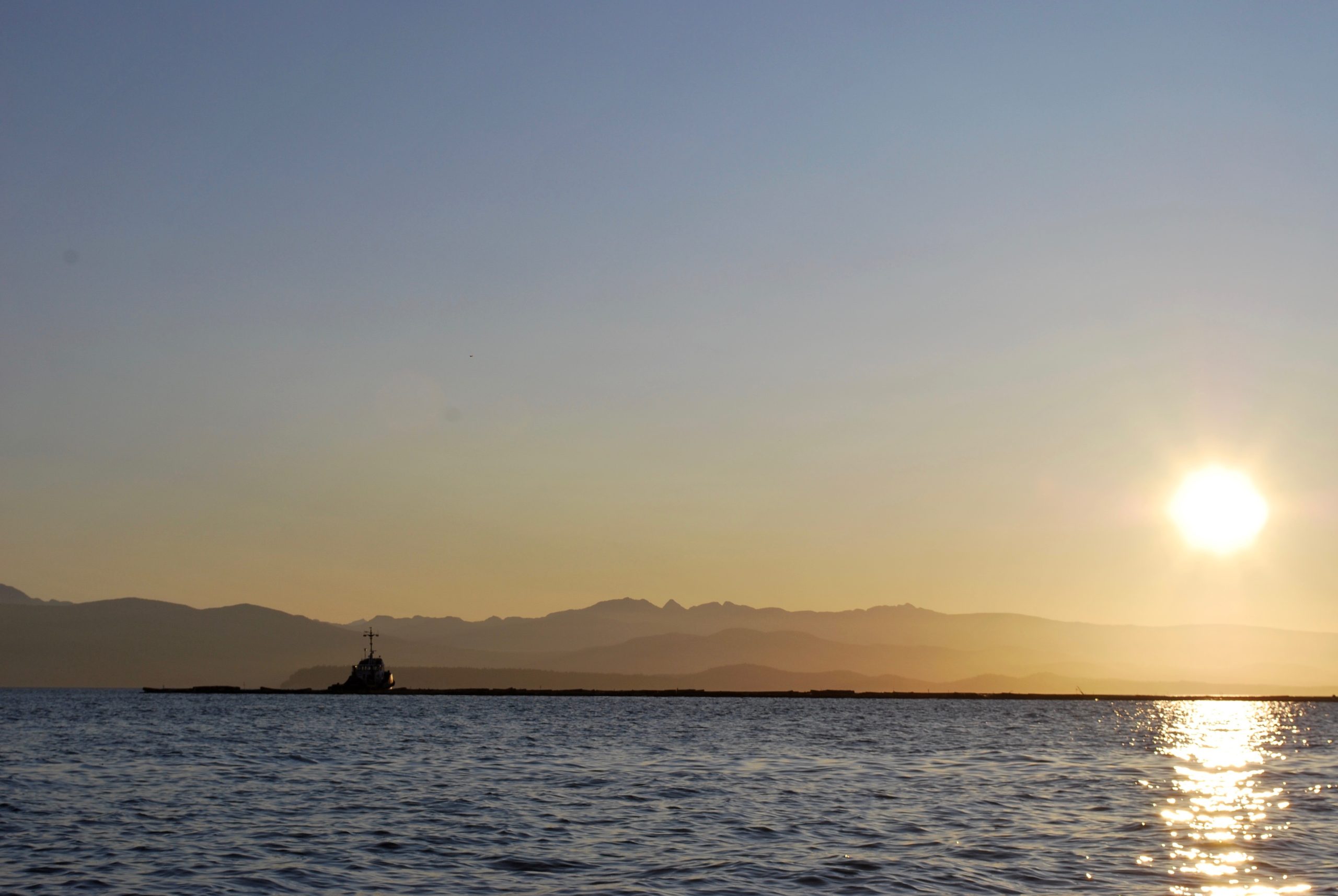Large crossings in a small boat create a deeper appreciation for the simple beauty of shallow water and vibrant shorelines
One of the reasons I love small boats is because they are so well suited for cruising in shallow water, for skating the edge where the best of land and sea come together. That edge is where fascinating marine creatures thrive: feathery sea anemones, purple starfish, darting oystercatchers. Waves and tide make dramatic shifts here, changing from hour to hour, and the deep greens of salal bushes along with the cedar trees’ bronze bark contrasting elegantly with the blues and silvers of the water.
For me, open water far from shore has limited appeal—its just water. Breathtaking in its immensity and attractive in its lack of human encroachment, the open water always causes a foreboding deep in my gut. Making a crossing in a small, motorless boat always takes resolve. Even if I can see where I’m going, once I’m a few hundred feet off shore, I might as well be miles away; if I run into trouble, I’m on my own. Nobody is looking for, nor expecting, a small boat in a big body of water.

Still, my southerly voyage on the Inside Passage entailed several large crossings. And while I initially regarded them with some apprehension, my outlook was altered by a few words from a fellow sailor before I set out. Refusing to divulge details about his own crossing of the Strait of Georgia in a small sailboat, he simply said gravely, “It was sphincter tightening.” Whatever that meant, I suddenly wanted to experience it.
About half-way through my journey, a gentle wind pushed me south from a protected cove on Cortes Island. As I made the leap from the clusters of islands and back channels towards mainland British Columbia, I got the first glimpses of the wide open waters of the strait in the distance, an expanse I’d have to cross in the coming days.
Over the course of a week, I wound my way towards and through Malaspina Strait, popping into bays and hugging the shore past the craggy Copeland Islands, stopping in Lund’s tiny harbor, and resupplying in the busy area around Pender Harbor before making the leap into the Strait of Georgia—a leap I did not make lightly, recognizing that even big boats need to exercise caution in such a vast body of water.
Crossing the Strait

To cross the strait, I decided to sail about ten miles from the mainland to Texada or Lasquetti Island, then, when the weather allowed, make a second leap twelve miles further to Vancouver Island. Pushing off from the mainland shore, the water seemed alive. Its jumbled seas bounced off my hull via unseen currents, vibrated with tiny standing waves, and small swells from distant places lifted and shifted my boat, which seemed increasingly small. By the time I was four miles off shore, I could see the uninterrupted curve of the earth as I looked south down the strait. I was glad I didn’t feel scared, because there was no refuge in the miles of open water that surrounded me.
The second hop was like the first, but worse, as if some force had magnified the conditions, making them lumpier, splashier, windier, and bumpier. Between swells, I watched keelboats hobby-horsing in the distance. In the course of about two hours, I went from flying a full mainsail to reefing down to my third and final reef. Eventually the waves had grown so big, that I was scared to lean over and bail water out of the bilge or even grab a snack. After sailing a few miles, I just heaved-to and watched for a break in the conditions.
Finding Calm Nearshore
A lull in the wind and dampening of the whitecaps gave me the confidence to continue on. I longed to get towards the shore— any shore really—as long as whitewater wasn’t washing over it.

I found that calm and the familiar edge as I approached the city of Nanaimo a few miles later. With its developed picnic areas and groomed trails, adjacent Newcastle Island Provincial Park, was the type of place I’d normally avoid. But when one of its many sheltered nooks appeared around a bend, I steered in. A ripple spread across the surface of tiny Midden Bay as I tossed out an anchor in three feet of water. I noted a few ducks dabbling and a clump of eelgrass languishing near the shore. Bailing a dozen gallons of salt water out of the bilge in clear view of an oak tree, I was at home again. It was fun, and downright comforting, to swing in the millpond-like conditions. And now that I knew what sphincter tightening really meant, I wasn’t anxious to feel it again.
Bruce Bateau
Bruce Bateau sails and rows traditional boats with a modern twist in Portland, Ore. His stories and adventures can be found at www.terrapintales.wordpress.com






